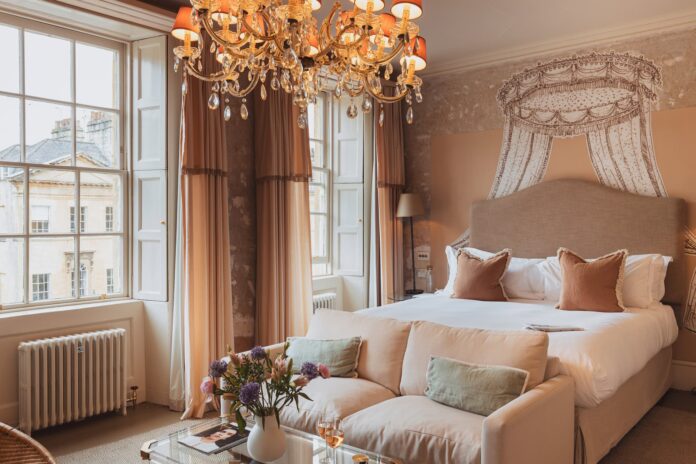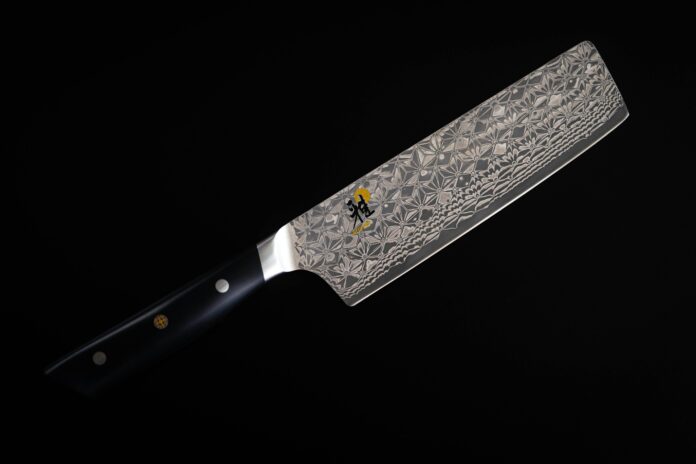Are you considering a change of pace or yearning for a fresh start? Do you think your passion for cooking could be translated into a career? How does the idea of permanent backache, leg pain, burns and blisters sound? You could have it all, by working as a professional chef.
Though the hours are notoriously long and the stress levels sometimes high, there is much satisfaction and fulfilment to be found in a professional kitchen. After all, what other job allows you to work with your hands, play with fire and sharp knives (don’t actually play), handle stunning ingredients each and every day, and taste plenty of great food in the process?
No one day is the same, but if you’re looking to succeed as a professional chef, there are a few tools of the trade that you should carry with you at all times, to help keep the chopping finer, the slicing thinner and the ‘can I borrow your….?’ to an absolute minimum.
It should be noted a restaurant will generally expect you to bring your own chef’s whites (short sleeved is fine unless otherwise stated), chef’s trousers (black is best), chef’s shoes and a set of knives and sharpener. The restaurant will provide you with an apron and any other specialist kitchen equipment required for your role that day.
Today, we’re taking a look inside a prof chef’s knife roll, whose contents will likely define your day’s cooking and your career; here are 5 essential knives and tools that every cook carries.
A Chef’s Knife
The first tool you’ll need, with question or compromise, is a chef’s knife. A chef’s knife is a versatile tool that can be used for a variety of tasks, such as chopping vegetables, slicing meat, and so much more. In short, it is the essential tool of the trade (clue’s in the title, huh?), and without one, you’ll be sent packing from a professional kitchen before the first starter has even left the pass.
A chef’s knife has a blade of around 20 centimetres (8 inches) in length and 4 centimetres (1.5 inches) in width, with a heavy, sturdy handle well suited for being held for long periods without causing too much discomfort.
It is important to choose a chef’s knife that feels comfortable in your hand, or you’ll be risking blisters or repetitive strain injury from something as simple as slicing onions. In addition, you should make sure that the blade is made of high-quality stainless steel. This will help ensure the quality and longevity of the knives you use.

A Paring Knife
Of course, there are some daily, dainty jobs in a professional kitchen which require a smaller knife to complete with precision. These include peeling, hulling and cleaning delicate fruits and vegetables, scoring pretty patterns onto pastry, and deveining shrimp, amongst many other tasks which require intricacy.
For these tasks, a paring knife (with a blade of around 3 cm in length) is ideal. With a chef’s knife and paring knife in your roll, you’ll be able to tackle the majority of everyday kitchen tasks, though there are a couple of other knives that may come in handy, too.
A Serrated Bread Knife
Speaking of other knives that may well come in handy, the majority of chefs also carry a serrated bread knife in their rolls. Not only for slicing crusty sourdough without crushing it, serrated bread knives can also be used for cutting into fruits and vegetables with particularly tough skins, such as squashes and melons, as well as being ideally suited for slicing cooked meat with crispy skin (pork belly, we’re looking at you).
Generally speaking, a serrated bread knife will be a little longer than your chef’s knife.

Task Specific Knives
Other useful additions to your block or roll would be a filleting knife for precision fish prep and a boning knife for making light work of butchery. A cleaver also comes in handy for chopping through bones with a direct, focused whack.
That said, it’s unlikely chefs who are just starting out (usually in a commis chef role) will be allowed near the meat and fish, so treat these knives as a luxury. Instead, it’s more sensible to invest more money in your chef’s knife than buying lots of blades you don’t really need.
Read: 8 professional chef’s tips for a better organised kitchen at home
A Utility Knife
Sitting comfortably between your chef’s knife and paring knife in terms of size, the utility knife is a brilliant all-rounder that proves invaluable during prep. With a blade typically measuring 12-15 centimetres (5-6 inches), it’s perfect for those middling tasks where a chef’s knife feels unwieldy, yet a paring knife seems too delicate. Whether you’re trimming mushrooms, portioning citrus segments, or slicing soft herbs, the utility knife offers exceptional control without sacrificing efficiency.
As the team at Cutting Edge Knives tell us, many chefs find themselves reaching for their utility knife when faced with detailed garnish work or when preparing ingredients for canapés. Its manageable size makes it particularly suitable for extended periods of precise cutting, helping to reduce hand fatigue during those long mise en place sessions.
A Santoku Knife
Though traditionalists might raise an eyebrow, the Santoku knife has earned its place in many a professional chef’s roll. This Japanese-style blade, typically 16-18 centimetres (6-7 inches) in length, features a straighter edge and less pointed tip than a classic chef’s knife. The name ‘santoku’ translates to ‘three virtues’, referring to its excellence at slicing, dicing, and mincing.
What sets the Santoku apart is its shorter length and lighter weight, making it particularly suited to those with smaller hands or anyone seeking more precise control. The blade’s characteristic hollowed-out dimples (known as a Granton edge) help prevent food from sticking to the knife during repetitive cutting tasks. Whether you’re finely julienning vegetables or creating paper-thin slices of raw fish for sashimi, a Santoku offers exceptional versatility whilst reducing arm fatigue during long prep sessions.
A Honing Steel
Almost as essential is a proper implement for sharpening those knives of yours. At the end of each service, chefs tend to favour re-sharpening their knives with a wet stone, but during the cut and thrust of the day in a professional kitchen, there’s not really time to get yours out and start thrusting, stroking and gliding.
For occasions when time is tight, a honing steel is ideal, helping you sharpen up your knife for a busy service or a high-intensity slicing job in no time.
Read: 5 of the best knife sharpeners for chefs

5 More Essential Chef’s Tools For Good Measure
A few other tools that you should carry in your knife roll include:
- A cranked spatula, for effortlessly lifting ingredients onto the plate without excessively fingering them. Not using a spatula risks changing an ingredient’s temperature, or damaging its pristine appearance.
- Sure, chefs carrying tweezers in their front pocket elicit plenty of teasing, but for delicate items, such as edible flowers, tweezers can help you plate up in a graceful, nimble way.
- A thermometer or cake skewer, ideal for testing the core temperature of cooked ingredients, precisely or rather more imprecisely.
- A peeler, which is one of the professional kitchen’s most coveted (and misplaced) essential tools!
- Professional kitchens rely on a detailed system of labelling and dating, and if you’re not carrying a sharpie at all times, you’re going to annoy your colleagues constantly by asking to borrow theirs.
The Bottom Line
With these items in your knife roll, Michelin stardom awaits! We can’t wait to see the plates you produce.





